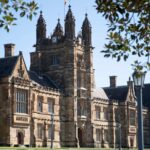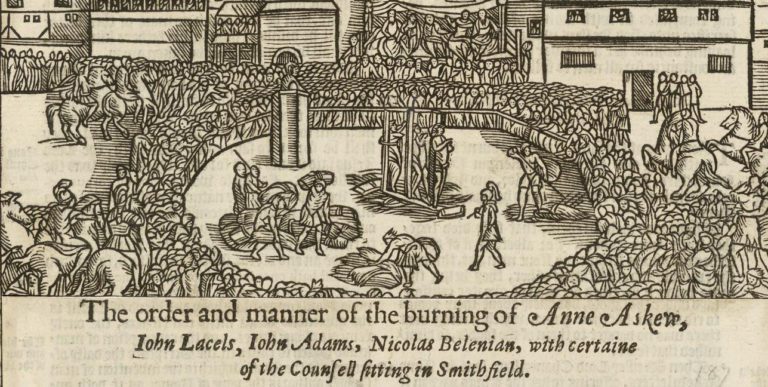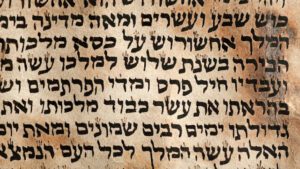This article was first published by Eureka Street in January 2024. Working from a theological framework (drawing on biblical passages such as Matt 22:15–22 and 28:16–20; Acts 17:24–28; Rom 13:1–7; 1 Pet 2:13–17 and Rev 11:15–18), Michael Jensen explores the nature of ‘civil religion’, arguing that all nations need some kind of religious foundation. This longer essay helps us in our own political reflection and equips us to discuss these things with non-Christians too.
In an age of declining adherence to the Christian faith, has Australia found a new civil religion? And will it serve us well? As an Anglican minister and theologian, it seems to me that this question about what you might call the ‘soul’ of Australia hasn’t been far from the surface in recent debates—especially following the Queen’s death in 2022 and during the fractious Voice referendum. But because, in contrast to the United States, we in Australia ‘don’t do God’, we rarely acknowledge the religious dimension of our national identity.
God Save the King?
Queen Elizabeth II’s long reign spanned an era of dramatic social change. It was a long time between coronation—so long that we’d largely forgotten, if we ever realised, what crowning a monarch entails. The coronation is an avowedly Christian ceremony—God gets mentioned a lot. The King was crowned in a Christian church by an archbishop; and swore to uphold the ‘Protestant Reformed Religion’ in his realm. He is designated the ‘Supreme Governor’ of the Church of England, whose bishops still sit in the House of Lords. The United Kingdom is constitutionally a Christian nation. Even so, there were some critics of the religiosity of the coronation. Was it fit for a modern nation which, whatever its formal religious identity, is increasingly irreligious?
In Australia, which since Federation in 1901 has never had a formal affiliation to a particular Christian denomination, we felt the disparity more acutely. The proclamation of the new King’s accession to the throne in Canberra was a moment that called for ceremony and acts of devotion—of ‘civil religion’, one might call them. It needed symbolic gestures and words pointing to how we understand ourselves as a nation. But what should these be? For seventy years we had no need to mark such an occasion. What now are the symbolic acts that establish the common identity of the Australian nation? In other words: what is our civil religion?
At Parliament House, Governor General David Hurley read a proclamation that linked Charles’ accession to the will of God:
We therefore, General the Honourable David John Hurley AC DSC retired, Governor General of the Commonwealth of Australia and members of the Federal Executive Council do now proclaim Prince Charles Philip Arthur George to be King Charles III by Grace of God, King of Australia and his Realms and Territories, Head of the Commonwealth.
The royal anthem, ‘God Save the King’, was sung—as much a prayer as it is an anthem. There was the usual military salute. But then, something new: a Welcome to Country, a First Nations dance, and a smoking ceremony. What did this brief ceremony reveal? For one thing, it showed that even though Australia is ambivalent about monarchy and about God, the Judaeo-Christian God yet lingers on the edges of our formal political life (the Lord’s Prayer still opens the proceedings of our parliaments, for example). But this feels odd to many Australians. A mediaeval and Christian coronation ceremony crowning our head of state is strange in a country that had no mediaeval period as such and is not constitutionally Christian—especially now that only a minority (though still a large one) of Australians even identify as Christian.
Our current practice of civil religion contains the trace elements of Christianity. The question is: what is going on when we non-Indigenous Australians ask Indigenous people and elements of their cultures to function as our civil religion? What are the implicit assumptions about history, transcendence, and our national identity that we reflect in our current expressions of civil religion? What is our ‘dreaming’?
Even the concept of civil religion may seem odd to Australians. After all: aren’t we a secular country?
What Is a Civil Religion?
Our constitution does not pursue as severe a separation between church and state as that of the United States, but it definitely doesn’t establish a state church of the kind that you would find in Sweden or in the United Kingdom. Nor do we have the custom of strongly preferring one particular faith—whether constitutionally or in practice, as we see in many Islamic republics or in a country like Argentina, where Roman Catholicism is given preferred status. There is in our constitutional documents and parliamentary conventions a light touch of Judaeo-Christian theism, but it is not much more than that. A generic Christianity was assumed by the framers of the Constitution.[1]
But I would argue that every society, whether it identifies as ‘secular’ or not—and whatever the faith of its citizens— has what may be validly called a ‘religious’ sense of itself, which finds expression in public acts of self-definition. This is our civil religion.
This concept needs some explaining. The expression originates in the Enlightenment with Rousseau’s The Social Contract but found renewed usage with the work of the renowned US sociologist Robert Bellah in the 1960s and 70s:
By civil religion I refer to that religious dimension, found I think in the life of every people, through which it interprets its historical experience in the light of transcendent reality.[2]
Civil religion, then, is not simply a generalisation about what the populace believes about transcendent reality. This could be understood via census data and surveys. That information is not irrelevant to civil religion; but the term civil religion specifically refers to the way in which nations speak to themselves about themselves and about how political authority, law and government operate within their jurisdictions—and how they enact that self-understanding. After all, nations are primarily ideas. They are the software that runs on the hardware of geography and history. A nation is the political expression of a particular people living in a particular place at a particular time. And its civil religion exists to perpetuate that idea: to provide a nation with its own ‘dreaming’, we might say. You can see this most overtly in the ceremonial and legal aspects of national life, when the nation is functioning overtly as a nation (or the city as a city, or the empire as an empire). They are moments of heightened self-consciousness: for the retelling of national stories and the repeating national myths.
A civil religion may adopt and adapt beliefs and practices from traditional religion, but—and this is crucial—it isn’t the same thing. It’s common practice for nation-states and empires to co-opt the pre-existing religious faith of the people they govern to bolster their authority and promote civil harmony. In 1956, for example, the US famously introduced the motto ‘In God we Trust’ and added it to its currency. It isn’t hard to see why: not only was the 1950s a high-water mark for American religiosity, it was also a contrast to the avowed atheism of the USSR, their Cold War opponents. American national piety did not mean adherence to a particular denomination, but it meant adherence to a traditional form of Judaeo-Christian theism that could unite the many faiths of the nation against the looming threat from an aggressively atheistic ideology armed with nuclear weapons and an expansionist intent.
US civil religion is derived from Christianity, but the idea of civil religion allows us to see that even this highly Christianised civil religion is something other than Christian faith as such. And as Bellah claims, civil religion is to be found ‘in the life of every people’—even those societies which are determinedly secular or even atheistic. In the absence of a transcendent reality borrowed from one of the great religions, a society will always find some other source of meaning and values. And it will establish ceremonies and rituals to convey authority and legitimacy on itself. These are designed to engender a sense of unity and common identity.
This is the way that nation-states seek to convey an image of continuity and stability. They hope to establish their providential right to exist—a sense that they exist because of the inevitable unfolding of their destiny. There’s a need to point away from the necessary artificiality of constitutional arrangements and from the historical contingency of a nation’s existence towards something more permanent. And civil religions serve to (in religious language) sanctify a nation. Civil religions have the function of giving nations a sense of their legitimate moral right to exist. Thus, they tend to speak of moments of virtue rather than of vices. Perhaps they remind the nation of a moment when an oppressor was overthrown, or of a moment of great valour. Or they serve to repeat the most central national ideals by using its most hallowed words: freedom, a fair-go, mateship. A civic religion says: we are a holy people.
What this means is that, to have a nation, you need to have an idea of some transcendent reality. You need to have some reference point which is greater than the nation itself, because your idea of the nation will need it as a reference point. Is it history, as in versions of communism and liberalism? God? A sense of moral evolution? The personality cult of a leader, or a dynastic monarchy? It may be talk of a set of values, but these will have to be rooted in some founding myth or other.
But the pressing question for a post-Enlightenment state is: how do you evoke transcendent reality when we live in what Canadian philosopher Charles Taylor has called a ‘disenchanted’ world? When formal/traditional religious accounts of reality have been largely banished from the public square—or at least muted—what’s to take their place? When a majority of a population no longer identifies with a traditional religion, what will become of civil religion? This is not a new problem of course: Rousseau, who believed that no state ever existed that did not have a religious foundation, puzzled as to what religion might serve an enlightened state—given that the pagan and Christian options were for him not viable. But if we are to take both Rousseau and Bellah seriously here, something will fill the void left behind.
Civil Religion in Australia
We’ve already noted that Christianity is no longer the default religious setting for a substantial number of Australians. Up until comparatively recently, if Australians were agnostic, in general they were Christian agnostics. They have never been passionate churchgoers, but they always knew which church they didn’t attend. Christianity provided the common moral and spiritual language for the nation. That is no longer the case. We now have no substantial moral and spiritual language in common. Australians under the age of fifty or so likely do not know the Christian Bible in even a superficial way. Thus, an Australian civil religion drawn from Christianity does not resonate as it once does. So what are modern Australians to do for a civil religion?
We found ourselves in Rousseau’s dilemma. Having rejected Christianity, all he was left with was a very short list of Enlightenment principles to serve for a civic dogma: the existence of God, the life to come, the reward of virtue and the punishment of vice, and the exclusion of religious intolerance. But is that enough? What his vision of civil religion lacks is a sense of providence working in history to bring about a nation in its particular contemporary form—a founding myth that transcends the nation and gives it a vision of itself for which it must strive.
And this explains why, in a changed religious/spiritual landscape, and in the context of doubt over the national story, Australians and their governments and institutions have reached for the rites and ceremonies of our First Nations peoples to serve as a civil religion. The widespread adoption of the Welcome to/Acknowledgement of County in the last decade is the most obvious example of this. The Welcome to Country came into its modern usage in the mid-1970s. One of the first Indigenous people to perform the rite in the modern era, Richard Walley, described how in 1976 he welcomed Maori and Cook Islander performers to the Perth International Arts Festival:
I asked the good spirits of my ancestors and the good spirits of the ancestors of the land to watch over us and keep our guests safe while they’re in our Country. And then I talked to the spirits of their ancestors, saying that we’re looking after them here and we will send them back to their Country.
While the Welcome reflects an ancient practice, it has taken on a modern form since then. From 2008, each new Federal Parliament has opened with a Welcome to Country and other Indigenous ceremonies.
The Welcome to Country has spiritual or religious roots in traditional Indigenous religion. It originally referred to the ancestral spirits of the land (as we can see in Walley’s version). This is more overt in the case of smoking ceremonies, which are intended to cleanse a place or a meeting from evil spirits. For most non-Indigenous Australians—and for most contemporary Indigenous Australians—it does not bear that metaphysical meaning. This is not because contemporary Australians are completely atheistic. On the contrary, the language of spirituality is much in evidence amongst non-religious people. Rather, the post-Christian believes that there is a kind of universal or global spirituality to which all expressions of religion are connected. Thus you can perform or incorporate religious acts from a tradition that you don’t share, because to the contemporary mind, all such acts are simply expressions of the same general, world faith. Modern secular Australians do not believe in ancestral or evil spirits—but they do believe that these gestures are ‘spiritual’ in some sense. And thus, we have created an ‘Australian Shinto’.
A parallel may be found in yoga—a form of exercise widely practiced in Western countries. Yoga has specifically spiritual and religious roots in Hinduism. But a secular Westerner does not for a second think that they are engaging in Hindu worship when they go to their Wednesday morning class in stretch pants. They would perhaps call it a spiritual practice. It’s a peculiarly Western and very modern approach: one that appropriates aspects of traditional spiritualities without fully embracing any of them—the Celtic cross tattoo, the Buddha in the garden, the tantric sex seminar. It’s not unlike what has happened with Australian civil religion. We’ve borrowed from Indigenous spiritualities and cultures and incorporated our borrowings into our national practices—without for a minute imagining that we’re adherents of traditional Indigenous religious beliefs as such.
What we hope to achieve is a sense of a connection with a deep past through this borrowed lens. It’s also a past which isn’t compromised by the guilt of dispossession. But more than this, too: we are using Indigenous rites to sanctify us from the guilt of colonialism by respecting that which was once treated with contempt. This borrowing of another’s cultural practices means that we don’t have to align ourselves (uncomfortably for many) with Christianity and its institutions, which we see as complicit in the sins of the past. But neither are we embracing Indigenous spirituality (if we even knew what that was). Indigenous culture and its elders are asked to act as the priestly mediators and custodians of this new civil church, representing us to the transcendent and the transcendent back to us. We borrow from their dreaming, but our dreaming is not theirs.
I am certainly not arguing that any of this is necessarily inappropriate or unhealthy. Finally recognising Indigenous history and culture in our civil religious practice is a small gesture of reconciliation in comparison to the dispossession of First Nations peoples. But there is some irony here in that Indigenous Australians tend to be at least as Christian than the general populace of Australia—and that today very few describe themselves as adhering to traditional beliefs. It may be that, in the wake of the failed Voice campaign, Indigenous people will find that these gestures of respect ring hollow.
What has happened in Australia’s civil religion since so much of it seems to have happened almost subconsciously? Because of the long and deeply held suspicion of religion in Australia’s media and academy, religious beliefs are often under-explained or unacknowledged in our nation’s discourse. And that’s the weakness of the current situation. We borrow from Indigenous religion and culture, but only insofar as we can incorporate them into the very vague, post-Christian ‘faith’ of modern Australia. The vagueness of this faith in some transcendent being, or at least in some sense of shared values that transcend us, has yet to really congeal into a national myth powerful enough to sustain a coherent sense of national identity. This myth needs to hold us to a standard to which we are to aspire together. But because we haven’t resolved the question of our nation’s post-1788 history, we now are unable, it seems, to speak coherently of the virtues that that part of our history bequeaths to us.
What our nation needs is a civil religion that can speak to us about the whole of our history honestly—without overlooking its darker episodes but also without condemning us to a purgatory of self-loathing. We need it to speak to us not only of justice, but of grace, forgiveness and reconciliation. We need a transcendent basis that allows us to be self-critical rather than either mawkishly self-congratulatory or bleakly self-condemnatory. We need it to be not just the story of one kind of people, but of the many peoples that seek to live together on this land.
[1] Section 116 of the Constitution reads: “The Commonwealth shall not make any law for establishing any religion, or for imposing any religious observance, or for prohibiting the free exercise of any religion, and no religious test shall be required as a qualification for any office or public trust under the Commonwealth.” The preamble reads: “WHEREAS the people of New South Wales, Victoria, South Australia, Queensland, and Tasmania, humbly relying on the blessing of Almighty God [emphasis mine], have agreed to unite in one indissoluble Federal Commonwealth under the Crown of the United Kingdom of Great Britain and Ireland, and under the Constitution hereby established…”
[2] Robert N. Bellah, The Broken Covenant: American Civil Religion in Time of Trial, (New York: The Seabury Press, 1975), p. 3.















